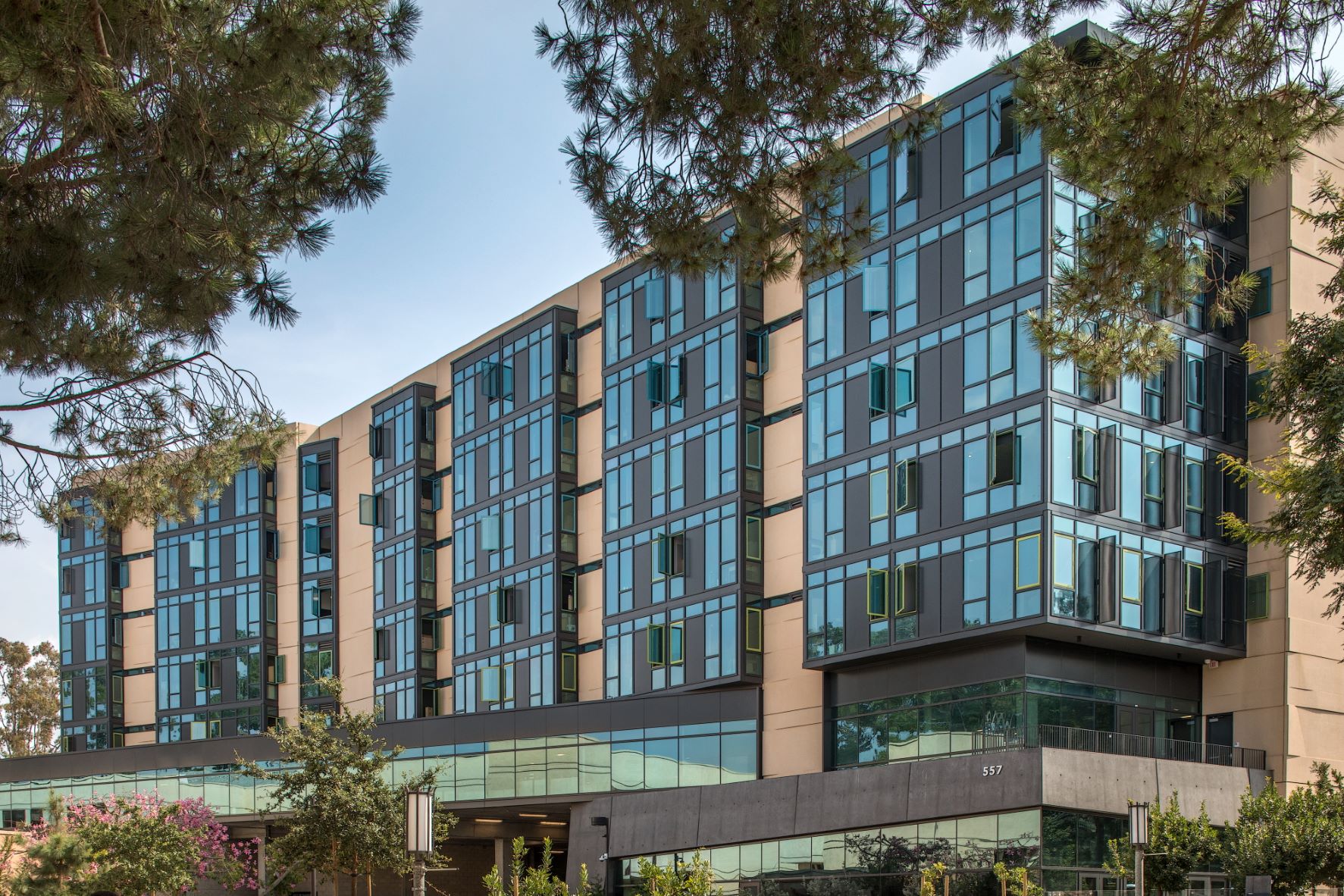Vitro Architectural Glass Announces New Names for Three Solarban® Glass Products

University of California, Irvine’s (UCI) living-learning community Middle Earth Expansion features Solarban® R67 (formerly Solarban® 67) Solexia® glass by Vitro Architectural Glass.
PITTSBURGH, January 4, 2023 – Vitro Architectural Glass (formerly PPG Glass) announced that it will be renaming three of its signature Solarban® solar control, low-emissivity (low-e) glass products at the beginning of 2023. While the products will have new names, the performance and visual characteristics of all three glasses will remain the same.
Solarban® 67 glass will be renamed Solarban® R67. The addition of the R designation brings Solarban® R67 into a group of subtly reflective glasses, including Vitro’s Solarban® R77 and Solarban® R100 glasses, and helps make its aesthetic attributes clearer to customers. Solarban® R67 glass provides excellent solar control performance and transmits and reflects colors with remarkably crisp fidelity and can be specified with low-iron, blue, green and earth-toned tinted glasses for additional visual impact.
Additionally, Solarban® z50 glass will be renamed Solarban® 60 on Optiblue® glass and Solarban® z75 glass will become Solarban® 70 on Optiblue® glass. The new names reflect the products’ composition.
“Solarban® z50 glass consists of the Solarban® 60 solar control, low-e coating on Optiblue® tinted glass and Solarban® z75 glass is made up of our Solarban® 70 solar control, low‑e coating on Optiblue® tinted glass,” explains Emily Losego, Commercial Innovation Director, Vitro Architectural Glass. “By changing the product names to better reflect their aesthetic attributes and physical composition, we believe it will be easier for architects, fabricators and others who work with architectural glass to evaluate and select the best product for their projects.”
Solarban® 60 on Optiblue® glass features a neutral, cool blue-gray appearance, and in a one-inch insulating glass unit with clear glass provides visible light transmittance (VLT) of 51% and a solar heat gain coefficient (SHGC) of 0.32. Solarban® 70 on Optiblue® glass features a similar cool blue-gray appearance and, in a one-inch insulating glass unit, provides visible light transmittance (VLT) of 46% and a solar heat gain coefficient (SHGC) of 0.23. Because of their neutral color profiles, both glasses harmonize well with clear and other color-neutral Solarban® solar control low-e glasses.
To learn more about all the architectural glass products available from Vitro Architectural Glass, visit www.vitroglazings.com or call 1-855-VTRO-GLS (887-6457).
About Vitro Architectural Glass
Vitro Architectural Glass, part of Vitro, S.A.B. de C.V. (BMV: VITROA), is the largest glass producer in the Western Hemisphere, manufacturing a range of industry-leading, energy-efficient, high-performance products such as Solarban®, Sungate® and Starphire Ultra-Clear® glasses. Committed to continually raising the industry standard for sustainability, Vitro was the first U.S. glass manufacturer to have its entire collection of architectural glass products earn Cradle to Cradle Certified® status and the first North American manufacturer to publish third-party verified Environmental Product Declarations (EPDs) for flat glass and processed glass products. Additionally, as of April 2024, all Vitro architectural glass products meet the Top 20% Low Embodied Carbon (LEC) material Global Warming Potential (GWP) threshold the U.S. General Services Administration (GSA) established pursuant to the Inflation Reduction Act of 2022 and related guidance from the U.S. Environmental Protection Agency. Vitro operates seven glass production facilities across North America, four residential glass fabrication plants in Canada and one of the world’s largest glass research and development facilities in Pittsburgh, Pennsylvania. For more information, please visit VitroGlazings.com.

Media Contact:
Robert J. Struble
Vitro Architectural Glass
412-820-8138
rstruble@vitro.com
www.vitroglazings.com
